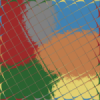Okay,
Next year is supposed to be the year of the release of DirectX 12. I had another article on DX 12 in GDNet Lounge but the reply time limit was reached. More has come to light about DX12.
Microsoft believes that DirectX 12 will run on all NVidia Hardware in which DirectX 11 runs. About 40% of AMD graphics that runs DirectX 11 will also take DirectX 12 "out the box". NVidia worked with Microsoft for the last 4 years on DirectX 12 in contrast with AMD developing Mantle API in recent years. DirectX 12 is targeting mainly personal PCs, though will be support for other computing devices. The partnership of Microsoft and NVidia has the aim of "creating the next generation graphics for PC games", while offering both a leaner API layer and opening more access to resources in hardware acceleration. Previous versions of DirectX added more coding overhead to handle legacy issues and cross-platform implementation, among other things. It looks as though DirectX 12 will be more targeting to later system and hardware than previous DX versions.
Big title game developers will have an adjustment to make in their approach to DX graphics. DX 12 seems to be made to provide all that NVidia graphics has to offer. Microsoft wants to reply to Mantle and keep competitive pressure on OpenGL. It would seem that each major hardware developer is being offered a certain API solution. Is the day of cross-platform APIs nearing a close?
There is a nice article in July Edition of Maximum PC about DirectX 12.






